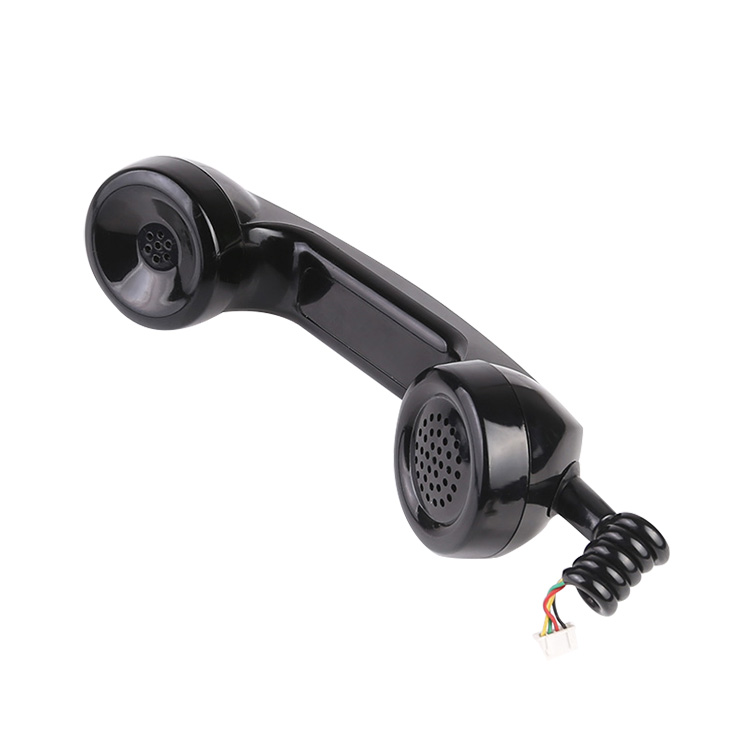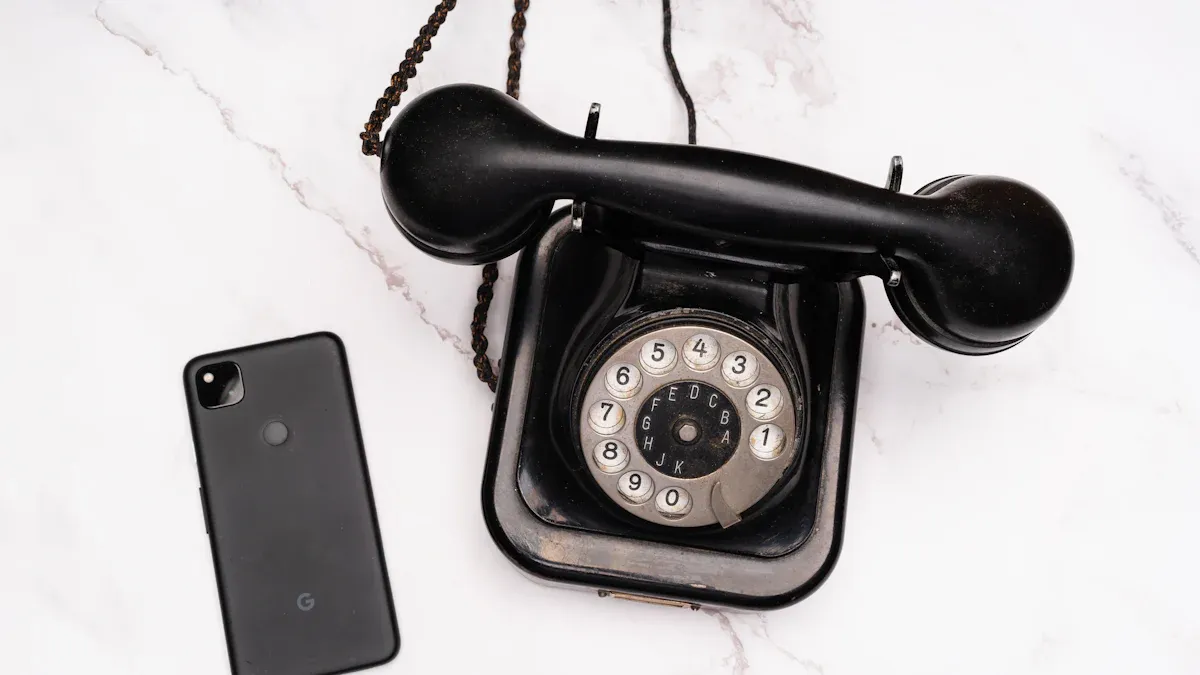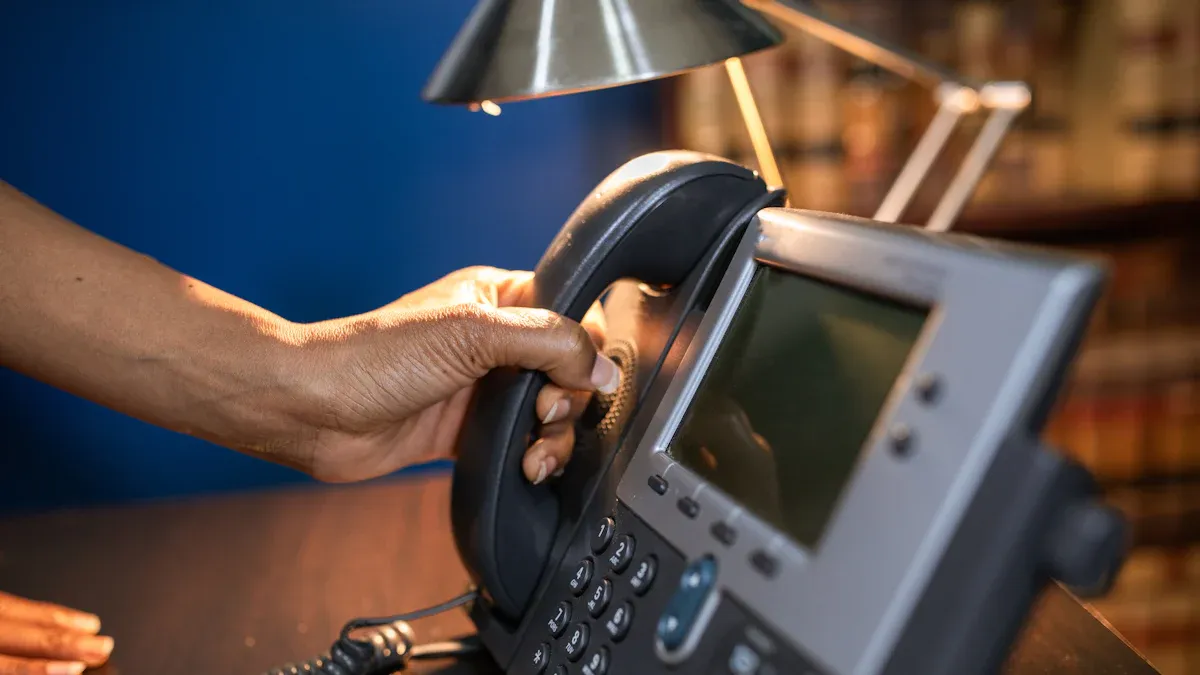
A telephone handset is part of a phone. I hold it to my ear and mouth. It helps me talk and listen. It has an earpiece. It also has a microphone. These are in one easy piece. I can talk and listen at the same time. This connects people by voice. For example, many people use smartphones. The GSMA said 75% used them by 2022. This shows the handset is still key. It is important for talking today.
Key Takeaways
- A telephone handset lets you talk. It also lets you listen. It has an earpiece. This is for listening. It has a microphone. This is for speaking.
- The handset turns your voice. It makes it electric signals. It also turns electric signals. It makes them sound. So you can hear others.
- Handsets used to be separate parts. Now they are one piece. Smartphones are a kind of integrated handset.
- There are many kinds of handsets. Some are corded. Some are cordless. Some are mobile phones. Each one is for different things.
- You should clean your handset often. This stops germs. It keeps you healthy.
Core Components: Understanding the transmitter, receiver, and cordset
I look at a telephone handset. It is a smart machine. It puts many parts together. They work as one unit. These parts help me talk. I will explain them. They are the earpiece, microphone, and casing with its cord.
The Earpiece (Receiver)
The earpiece is what I put to my ear. It changes electric signals. These become sound waves. This lets me hear the other person. Inside, I find special materials. They make this change happen.
- Magnets: These are often steel bars. They can be single or compound.
- Pole-piece and Iron Block: These are made of soft-iron.
- Coil Wire: This is copper wire. It has silk around it. It is usually wound side-by-side.
- Casing and Earpiece: These are made of hard rubber. They often screw together.
- Diaphragm: This is a thin iron sheet.
- Binding Posts and Leading-in Wires: Thick wires are soldered to posts.
Electric signals reach the coil. They make a magnetic field. This field works with the magnets. This makes the iron diaphragm shake. These shakes make the sound I hear.
The Microphone (Transmitter)
The microphone is where I speak. It does the opposite job. It changes my voice. My voice is sound energy. It becomes electric signals. These signals go through the phone network. Old microphones used carbon. My voice made the carbon squeeze. This changed its electric resistance. This change made a current. New microphones use other ways. But they still turn sound into electric signals.
The Casing and Cord
The casing is the outside of the handset. It has important jobs. First, it is shaped well. This makes it comfy to hold. Second, it keeps parts safe. It protects the earpiece and microphone. Third, it joins these parts. They become one unit. The cord links the handset to the phone. This cord carries electric signals. It carries my voice and incoming sound. It makes a strong connection. This lets me talk and listen easily.
Primary Function: Changing sound to electricity and back
I know what a telephone handset does. It is like a bridge. It turns my voice into electricity. It also turns electricity back into sound. This lets me talk and listen far away.
Sound to Electrical Signal
I speak into the microphone. My voice makes sound waves. These waves shake the air. The microphone catches these shakes. It has a thin sheet. This sheet moves with the sound. This movement starts a process. The microphone changes shakes into electricity. Old microphones used carbon. My voice squeezed carbon bits. This changed how electricity flowed. This made a changing electric flow. New microphones work differently. But they still turn sound into electricity. My voice patterns become electric patterns. These electric signals then travel. They go through the phone network.
Electrical Signal to Sound
The opposite happens when I listen. Electric signals come to my phone. These signals carry the other person’s voice. The earpiece gets these signals. Inside the earpiece, signals meet a magnet. This magnet makes a sheet shake. The shaking sheet makes new sound waves. These waves sound like the other person. I hear these sounds in my ear.
Two-Way Communication
A telephone handset is amazing. It does both jobs at once. I can speak into the microphone. My voice goes out as electricity. At the same time, I can listen. I hear the other person’s voice. This happens together. It is key for talking live. It lets us talk back and forth. This two-way talk makes chats easy. It is how voices connect people.
How to use the handset in our daily life
I have seen how the telephone handset changed. Its journey shows great new ideas. It started as separate parts. Then it became one piece. Now, it is in many devices.
Early Separate Designs
I learned about old phones. They did not have one handset. Users held an earpiece. They spoke into a mouthpiece. This was not easy. Imagine holding two things. I picture people juggling parts. They needed both hands. This design was normal. It still linked people far away.
The Integrated Handset
A big change came in the 1880s. I know Ericsson helped. They put the earpiece and mouthpiece together. This made the first combined handset. This made using a phone easier. I could hold it with one hand. My other hand was free. This single unit became the standard. It made the whole telephone system simpler. It made talking on the telephone line more natural.
Modern Adaptations
Today, the handset idea keeps changing. I see it in my smartphone. My smartphone is a combined handset. It has a speaker and microphone. It also has a screen. VoIP devices use this idea too. They let me call over the internet. The main job stays the same. I still hold a device. I hold it to my ear and mouth. This lets me speak and listen. The shape changes. But the goal lasts.
Types of Telephone Handsets

I know telephone handsets come in many forms. Each type meets different needs. They use different tech. I will explain the main kinds.
Corded Handsets
I often see corded handsets. They are on landline phones. These connect to the phone base. They use a physical cord. These handsets must be safe. They follow strict rules. For example, IEC 60601-1 is key. It is for medical gear. It stops shocks and fire. RoHS rules limit bad materials. In the U.S., FCC rules help. They keep phones from harming the system.
Cordless Handsets
I like the freedom of cordless handsets. These are like DECT phones. They talk to a base station. They do this without wires. They work up to 50 meters inside. Outside, they work up to 300 meters. This needs a clear view. But, I know about risks. Old software can be hacked. Unsafe base stations let bad guys listen. Many DECT calls are not secret. People can listen in.
Integrated Mobile Handsets
My smartphone is a mobile handset. It puts the phone and handset together. It is one small device. My smartphone is a useful phone. I can make calls. I can send texts. I can go online. All from one device. This makes talking very easy for me.
Specialized Handsets
I also see special handsets. They are made for certain uses. For example, some help people who cannot hear well. These phones are louder. They can be 55 dB louder. Some flash bright lights. This shows a call is coming. Some have big buttons. This makes dialing easier. Hearing Aid Compatibility (HAC) is also vital. It lets hearing aids connect. They use a telecoil. This cuts background noise.
Using a Telephone Handset

I find using a telephone handset easy. It connects me to others. Knowing how it works helps me. Comfort and care are also important.
Basic Operation
I pick up the handset. This is for calls. I put the earpiece to my ear. The microphone goes near my mouth. This lets me talk and listen. My voice goes through the microphone. The other person’s voice comes through the earpiece. This is how we talk.
Ergonomics and Comfort
I think about comfort. Good design helps me. I do not hold it with my shoulder. This stops pain. For long talks, I use a headset. This keeps my body straight. It stops neck pain. I keep my phone close. This stops me from reaching. These things make calls comfy.
Care and Maintenance
Handsets can get dirty. Using them a lot does this. Not cleaning them grows germs. Warm, wet hands help germs grow. Germs live on surfaces for weeks. This spreads sickness. I clean my handset often. I use alcohol wipes. Or I use a special cleaner. Microfiber cloths are good for daily cleaning. For a deep clean, I use alcohol and water. I put it on a cloth. I never spray the phone. I do not use air spray. Household cleaners are bad. Bleach or vinegar are not good. I clean dirt first. Then I clean germs. This keeps my handset clean.
I think the telephone handset is a basic tool. It lets two people talk. I hear with its receiver. Its transmitter sends my voice. This device changed over time. It started as separate pieces. Now, it is in many new tools. It is still key for people to connect. I feel it links far places well.
FAQ
What is a telephone handset?
I hold a telephone handset. It goes to my ear and mouth. It has a receiver. It also has a microphone. This lets me talk and listen. We can talk back and forth.
What are the core components of a handset?
I know the main parts. There is an earpiece. There is a microphone. There is also a casing. The casing keeps parts safe. It often has a cord. All parts work together.
How does a handset facilitate communication?
I will tell how it works. My voice becomes electric signals. Electric signals become sound. This lets me talk and listen. It happens at the same time. We can have live talks.
What is the difference between corded and cordless handsets?
I see a big difference. Corded ones use a wire. They plug into a phone. Cordless ones use no wires. They talk to a base. I can move around more.
Has the telephone handset changed much over time?
I see many changes. Old phones had separate parts. Then they became one piece. Now, smartphones are handsets. The main job is the same. But the look has changed.
Post time: Oct-22-2025
